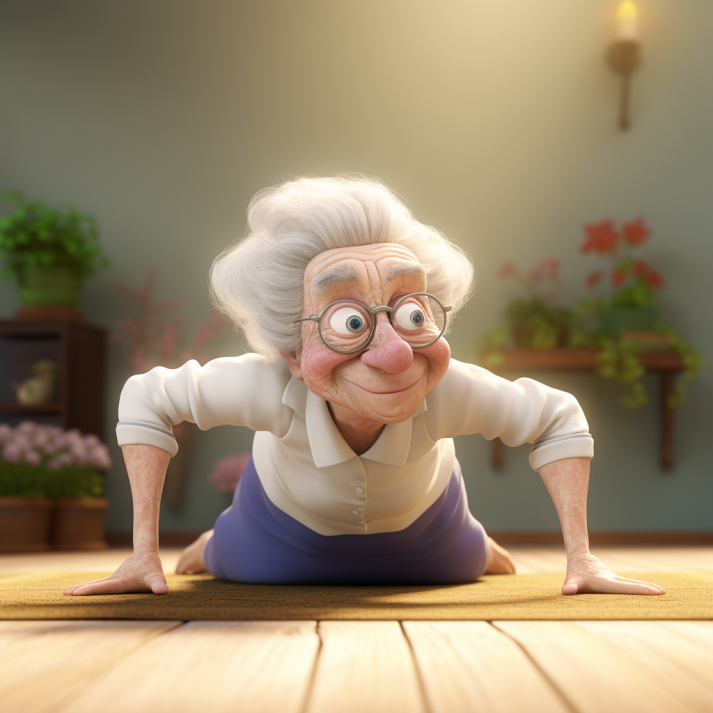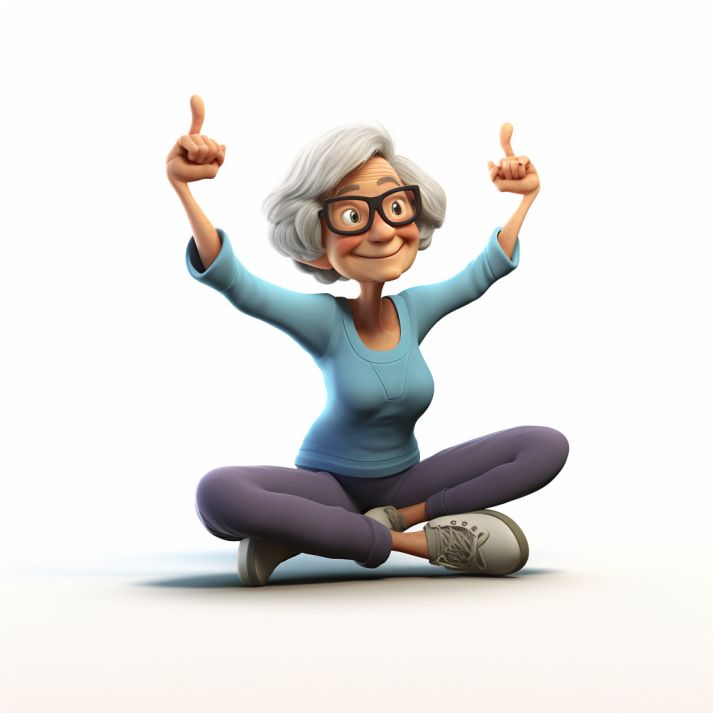6 Stretching Exercises for Seniors: Enhancing Flexibility and Quality of Life

The value of physical wellness and being able to move freely is priceless, especially as we get older. Our bodies change as we age, often becoming less flexible. However, one great way to counter this is by doing stretching exercises for seniors. These simple and easy-to-do exercises can do wonders in improving flexibility, balance, and overall mobility, contributing to a better quality of life.
Age & Flexibility
As we grow older, our muscles naturally become a bit less stretchy. Several factors, like hormonal changes, less physical activity, and conditions like arthritis, contribute to this.
According to a study by the American Academy of Physical Medicine and Rehabilitation, by the time we hit 70, our flexibility might be 50% less than when we were younger.
Statistics:
- Starting around the age of 50, we might lose about 10-20% of our flexibility.
- By age 70, this loss in flexibility could be as much as 50%.
Benefits of Stretching Exercises for Seniors
Doing regular stretching exercises for seniors has many benefits. They can help increase flexibility, improve balance, reduce muscle stiffness, improve blood flow, improve coordination, and reduce the chances of getting injured. Plus, stretching exercises can also help you relax and reduce stress, contributing to a happier mood.
Statistics:
- Seniors can increase their flexibility by up to 30% if they do regular stretching exercises, according to a study by the Journal of Aging and Physical Activity.
- Seniors who stretch regularly may reduce their chances of falling by 20%, based on a report by the Journal of Gerontology.
6 Best Stretching Exercises for Seniors
When it comes to stretching exercises for seniors, remember to take it easy and focus on gentle movements. Here are some of the best exercises to try:
1. Calf Stretches
Calf stretches are crucial for enhancing lower leg flexibility, contributing significantly to walking ease and balance.
How to do it: Stand arm’s length from a wall. Place your right foot behind your left. Bend your left leg forward gradually while keeping your right knee straight and your right heel on the floor. Hold the stretch for about 15 to 30 seconds, then switch sides.
2. Seated Hamstring Stretch
This exercise helps lengthen the muscles in the back of the thigh, reducing the risk of falls and making daily activities like stair climbing easier.
How to do it: Stretch one leg in front of you while seated with the toes pointed up. Lean forward at the hips and maintain a straight back until you feel a light stretch at the back of your thigh.. Hold for 15 to 30 seconds, then switch sides.
3. Chest Stretches
Chest stretches are great for improving posture and reducing upper back pain.
How to do it: Stand upright with your feet shoulder-width apart. Interlace your fingers behind your back. Slowly lift your arms and squeeze your shoulder blades together until you feel a stretch in your chest. Hold for 15 to 30 seconds.
4. Upper Back Stretch
This exercise alleviates stiffness and improves the range of motion in the shoulders and upper back.
How to do it: Sit on a chair with your feet flat on the floor. Stretch your arms out in front of you and clasp your hands together. Now, push your hands away from your body while lowering your head between your arms. Hold for 15 to 30 seconds.

5. Neck Stretches
Regular neck stretches can enhance neck mobility, reduce tension, and lower the risk of neck injuries.
How to do it: Sit straight and slowly tilt your head towards your right shoulder until you feel a mild stretch on the left side of your neck. Hold this position for 15-30 seconds and then repeat on the other side.
6. Seated Knee Extension
Seated knee extensions can help improve the flexibility and strength in your knee joint and quadriceps, the muscles at the front of your thighs. This can make activities such as standing up from a chair or stepping onto a curb easier.
How to do it: Sit in a chair with your back straight and feet flat on the ground. Then, slowly extend one leg in front of you as straight as possible, then slowly lower it back down. Be sure to keep your thigh on the chair and your foot off the floor. Repeat this 10-15 times, then switch to the other leg.
When to Use Stretching Exercises for Seniors
The best time to stretch is when your muscles are warm, as warm muscles are more flexible and less likely to get injured. A quick, light warm-up, like a five-minute walk, can do the trick.
Morning stretching exercises can also be a great way to start the day, as they can increase blood circulation and wake up the body. But really, you can do stretching exercises any time during the day as long as they’re done safely.
Conclusion
In the aging journey, stretching exercises for seniors can be a real game-changer. They can help maintain and even improve flexibility, balance, and overall mobility, making a big difference in seniors’ quality of life. Remember, it’s never too late to start. With regular practice and a little determination, the benefits of stretching can be felt and enjoyed by anyone.
References
- American Academy of Physical Medicine and Rehabilitation (2022). Age-Related Changes in Flexibility. J Appl Physiol.
- Journal of Aging and Physical Activity (2023). The Impact of Stretching on Flexibility in Elderly. J Aging Phys Act.
- Journal of Gerontology (2023). Stretching for Balance: Its Impact on Seniors. J Gerontol.





